As a search and rescue team member, I’ve seen firsthand how quickly a climbing trip can turn into tragedy. The impact ripples far beyond the mountain. It affects families, friends and the rescuers who respond. Lately, we’ve seen a troubling rise in serious climbing accidents, many involving experienced climbers who made small mistakes with devastating outcomes. These incidents remind us that even a moment’s lapse can erase your margin for error.
Our collective goal in the outdoor community should be to reduce these incidents. This article serves as a preventative SAR reminder: #TakeTheExtraMinute, double-check that knot and critically assess your decisions. Your life, and potentially the lives of those who come to your aid, depends on it.
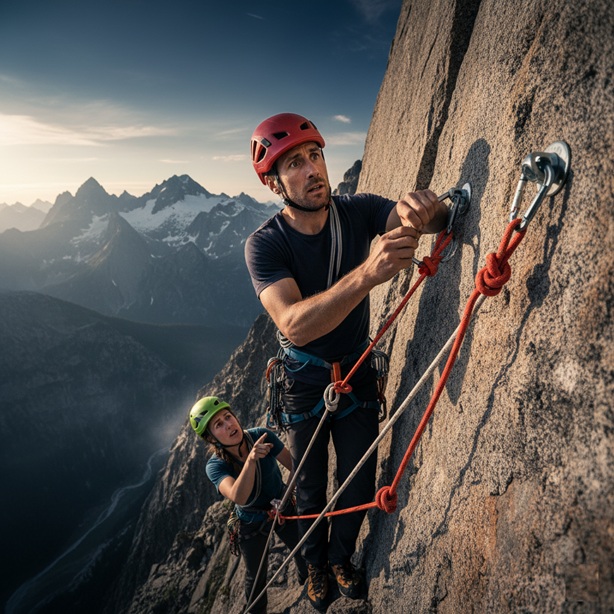
When a Moment’s Lapse Becomes a Lifetime’s Loss
The climbing community, from seasoned professionals to enthusiastic beginners, understands the inherent risks. Yet, even the most experienced climbers can fall victim to fundamental errors. The consequences are stark and irreversible.
Consider these recent tragic examples, which highlight common pitfalls. These stories are difficult to read and even harder to respond to, but they also teach us vital lessons about where things go wrong and how easily they can be prevented.
- Rappelling Off the End of the Rope: This particular error, often due to forgetting to tie stopper knots or misjudging rope length, is a tragically frequent cause of fatalities.
- On October 1, 2025, 23-year-old Balin Miller, a rising star in the climbing community known for his challenging ascents, fell to his death from El Capitan in Yosemite National Park. His death occurred while he was rappelling down to retrieve stuck haul bags after completing a challenging route. Reports indicate he rappelled off the end of his rope.
- In September 2023, an experienced Korean climber also fell to his death from El Capitan in Yosemite while climbing with a group of students. He, too, rappelled off the end of his rope while descending to fix lines, falling over 2,000 feet.
- Just four months earlier, in June 2023, a canyoneer was killed near the Great White Icicle in Little Cottonwood Canyon, Utah, when he rappelled off the end of his rope, falling 300 feet.
Rappelling off the end of a rope is not an act of daring. It is a fundamental safety oversight. Stopper knots, clear communication and careful rope management are non-negotiable.
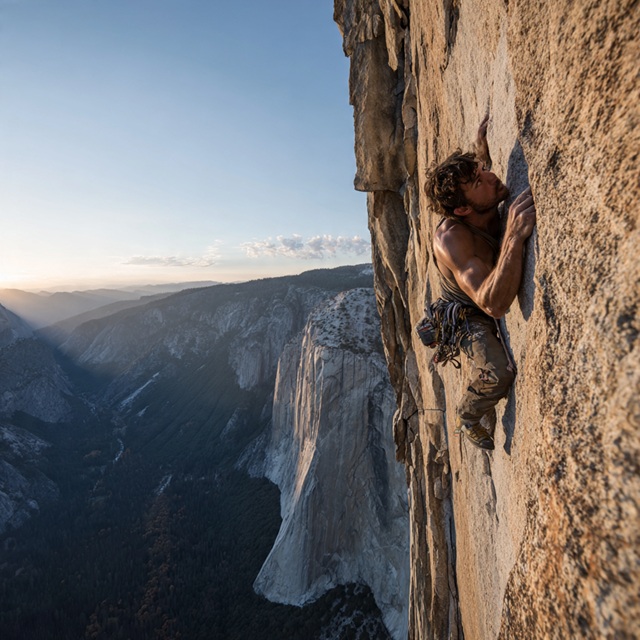
- Free Soloing and Unroped Climbing: Free soloing — climbing without ropes or protective equipment — removes all margin for error. While a highly specialized and deeply personal pursuit for a very small segment of climbers, it is unequivocally the most dangerous form of climbing. The difference between rope-protected climbing and unroped scrambling in alpine terrain is immense. One offers a safety net, however thin, and the other offers none.
- In July 2023, Bailee Mulholland, age 26, fell approximately 500 feet on Ypsilon Mountain in Rocky Mountain National Park while free solo climbing a “moderate” 5.4 technical route. Even seemingly “easy” technical terrain can be fatal without protection.
- In February 2023, Zach Milligan fell to his death while free soloing an ice climb in Jasper National Park in the Canadian Rockies. His death underscored that the risks of free soloing extend beyond rock to ice and mixed terrain.
- Dicey Anchors and Poor Judgement in Retreat: Even when using ropes, the anchors that secure them are only as strong as their weakest link.
- In May 2025, a group of four climbers was descending from the Early Winters Spires near Mazama, Washington, in the North Cascades. During their retreat from a route, they chose to use a single, old piton as a rappel anchor in a steep gully. The piton failed, causing three climbers — Vishnu Irigireddy, Tim Nguyen and Oleksander Martynenko — to fall over 400 feet to their deaths. Their climbing partner, Anton Tselykh, miraculously survived with severe injuries. This incident highlights the critical importance of building robust, redundant anchors, especially when retreating in complex terrain.
In all these cases, the climbers were experienced. Their choices, whether due to haste, complacency, overconfidence or a misjudgment of risk, resulted in irreversible consequences.
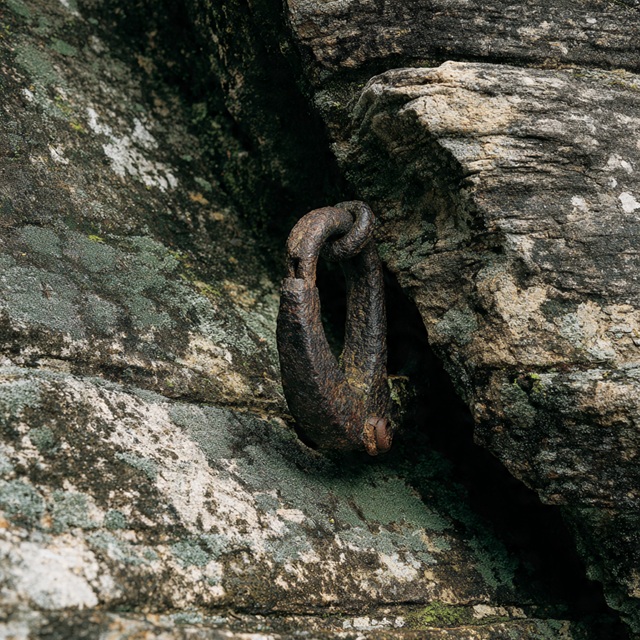
Why Mistakes Happen (Even to Experienced Climbers)
Even seasoned climbers who possess deep knowledge and skill can make fatal errors. Here are patterns that show up across these incidents:
- Normalization of Risk
After many safe climbs, it’s easy for small safety steps, like checking whether your rappel rope is the right length or resetting protection, to feel tedious or unnecessary. - Cognitive Biases
- Confirmation Bias: Seeking or interpreting information in a way that confirms existing beliefs (e.g., “this piton looks okay”).
- Optimism Bias: Believing oneself to be less at risk of experiencing a negative event compared to others.
- Complacency Bias: A false sense of security that develops after successfully performing a task many times without incident.
- Environmental Pressures
Deteriorating weather, approaching darkness or a looming deadline can rush decision-making. - Goal Fixation
An intense focus on achieving the objective, such as reaching the summit or completing a route, can sometimes override safety considerations. - Team Dynamics
Pressure from partners or a reluctance to speak up, can lead to group decisions that are less safe. - Fatigue, distraction or task overload
Many accidents happen near the end of the route, when climbers are tired or managing secondary tasks, like fixing snagged gear or rerouting ropes. Judgment suffers. Mental and physical exhaustion can significantly impair judgment and attention to detail. - Assumptions about equipment or environment
Assuming that rope length is sufficient or assuming that anchors are solid or that terrain is stable. Sometimes oversights about rope wear, knot integrity or anchor condition. - Failure of basic safety redundancy
Not using stopper knots, not double-checking rope ends, not having back-up plan. - Exposure vs. technical difficulty mismatch
A 5.4 might be technically easy for some, but if it’s very exposed, has loose rock or high consequence terrain, the margin for error is small.
Considerations for SAR Members in Vertical Rescue and Body Recoveries
As a search and rescue team member, I’ve seen the devastating consequences of climbing accidents. Body recoveries are a grim reality that weigh heavily on the search and rescue community and no one wants to be in a situation where they have to retrieve a body from a mountain. For us in search and rescue, these are not adventure stories. They are somber missions that carry significant emotional and physical tolls. Every recovery reminds us that the risks are real and the costs are personal. The reality is that search and rescue teams often face significant challenges when responding to climbing accidents, particularly in steep vertical environments. There are many considerations that we have to make in a rescue.
- Protect our team first. Slide dangers, falling rock and unstable anchors are common in recovery operations.
- Proper gear and redundancy. Always operate with backup anchor systems, belays, ropes.
- Plan the rescue entry and exit carefully. Vertical terrain complicates movement. Ensure escape routes, communication and backup systems.
Even if the mission is successful, we never walk out unscathed.
- Risk to Rescuers. Recovering a body from a vertical environment, especially after a fall, is one of the most technically challenging and dangerous tasks a SAR team undertakes. It often requires rescuers to operate in the same precarious, exposed terrain where the accident occurred, sometimes in adverse weather conditions, significantly increasing their own risk. We are putting ourselves in harm’s way not to save a life, but to bring closure.
- Emotional Burden. No SAR volunteer has a “body recovery” on their bucket list. These missions are emotionally draining, leaving lasting impacts on those involved. We carry the weight of these tragedies long after the incident is over.
- Resource Allocation. Every recovery mission ties up critical resources — personnel, specialized equipment and sometimes aircraft — that could otherwise be used for active rescues where lives can still be saved.
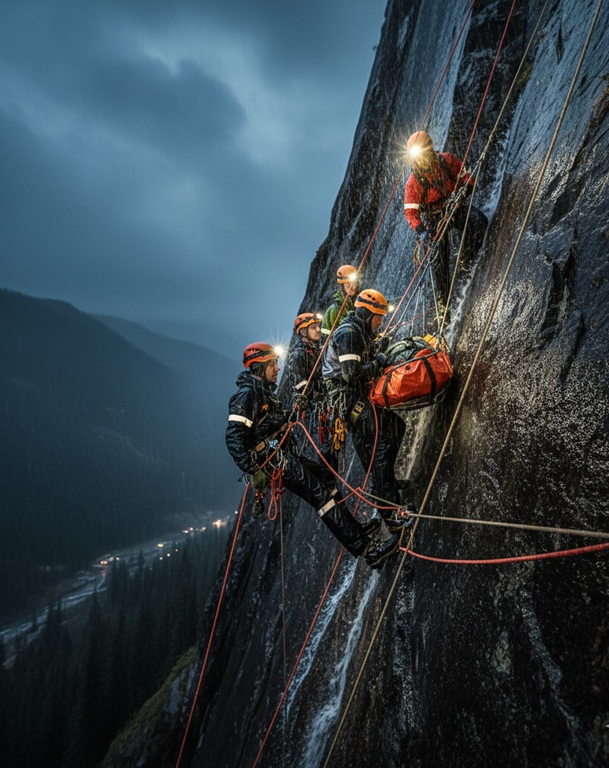
A Call to Action: #TakeTheExtraMinute
These climbers weren’t beginners — their accidents happened because small fundamentals broke down: rope didn’t reach, safety checks were skipped, exposure was misjudged. If every climber took just one more moment checking rope ends, anchor setup and fatigue levels, it might be the difference between returning home safely and being another rescue statistic.
To all outdoor enthusiasts, especially climbers, I urge you to embrace a culture of deliberate safety. The mountains will always be there, but your life is precious and irreplaceable. Let’s work together to make sure that every climbing adventure has a safe return home.
#TakeTheExtraMinute to assure your personal safety. Climbing is an exhilarating sport, but it’s essential to respect the risks involved. By taking the necessary precautions and being mindful of your surroundings, you can minimize the risks and enjoy the beauty of the great outdoors.
As a search and rescue team member, my best days are when my pager does not go off and I can spend time with friends and family. I hope that by sharing these stories, we can raise awareness about outdoor safety and prevent future accidents.
Let’s all commit to using that extra minute, because it matters. The best rescue is the one we never have to launch.
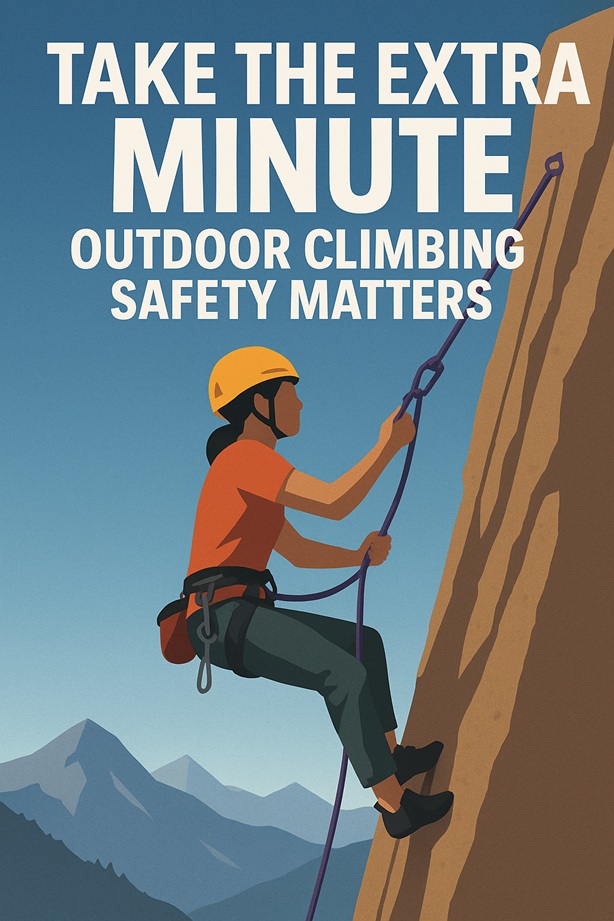
Discover more from Tales of Many Things
Subscribe to get the latest posts sent to your email.
